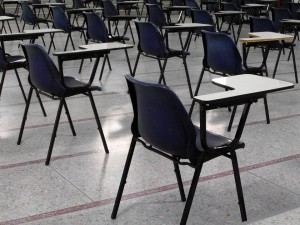 August 3, 2016 — How many students are on waitlists for charter schools this year?
August 3, 2016 — How many students are on waitlists for charter schools this year?
The state Department of Elementary and Secondary Education (DESE) says 32,600 in the headline of its press release.
But DESE’s own report (linked from http://www.doe.mass.edu/charter/enrollment/fy2017Waitlist.html) gives 23,601 as the number of students who applied to charter schools this year and did not get seats.
It’s clear from the report that even this figure is much higher than the actual number relevant to any discussion about the charter school ballot question, probably several thousand too high.
What’s more, DESE apparently has the data needed to tabulate the true number, but has not released it.
Rolled Over, Not Rolled Over, Partly Rolled Over
DESE’s release is headlined “State Estimates 32,600 Students Remain on Charter School Waitlists.” That’s the number news media used.
But a spreadsheet in the report gives 23,601 as the number who applied this year and didn’t get in, for both Horace Mann and Commonwealth charters.
DESE’s waitlist reports have been repeatedly criticized by state Auditor Suzanne Bump. One of her criticisms was that DESE allowed charter schools to keep students on their waitlists even if they have not expressed interest for many years.
DESE appeared to accept her criticism last year when the department told charters that, in the future, they must include only students who have applied in the current year. But then DESE gave schools the option of keeping the students they already had on their old waitlists.
This year, 11 Commonwealth charters chose to do that, while the rest adopted the new system. One of the 11, Sabis International Charter School, reported 2,775 students on its waitlist this year. But only 376 of them applied this year. All the rest expressed interest before March of 2014. Yet DESE included them in its latest waitlist numbers.
The 32,600 students reported in DESE’s press release include, according to DESE’s own figures, 9,700 students who applied before March, 2014, but did not apply this year.
Which Charters Are Affected By The Ballot Question?
Auditor Bump also criticized DESE for mixing Horace Mann charter schools with Commonwealth charters. Horace Mann charters have no relationship to the debate over the charter cap and are not mentioned in the ballot question.
From DESE’s published spreadsheets, it is impossible to disentangle the Horace Mann waitlist numbers from the Commonwealth waitlists so as to get a true number of students on Commonwealth waitlists.
But DESE did report on the waitlists for each individual Horace Mann and Commonwealth charter school. The total for Horace Mann charters was 3,634, almost all of them in Boston. That number includes students who are double counted because they applied to more than one Horace Mann school or to a Horace Mann school and a Commonwealth charter. That means we can’t simply subtract it from the 23,601 total of unduplicated students. All we can say is that the number who applied to Commonwealth charters this year and did not get seats by the time the reports were made to the state was somewhere between 22,967 (that is, 23,601 minus 3,634) and 23,601.
Since almost all the Horace Mann applicants are in Boston, DESE’s total for waitlisted charter applicants in Boston – 10, 308 – is probably several thousand too high.
Since DESE has the individual student records, they could report the actual number of waitlisted students who applied to Commonwealth charters this year, but DESE has apparently decided not to.
Boston District School Waitlists vs. Charter School Waitlists
Last year, somewhere between 6,720 and 20,161 students applied to Boston district schools and were put on waitlists because there was no space for them. (This number does not count students who applied to exam schools.) We don’t know the actual number because students could apply to up to three schools. But it is likely that more students were waitlisted for popular Boston district schools than for Boston charter schools.
There are also waitlists for other programs that are limited by the same state revenues that charter school expansion would tap.
For example, 14,500 children are waitlisted for the state subsidized pre-school program. Quality pre-school has been proven by extensive research to be a powerful tool for shrinking the achievement gap.

